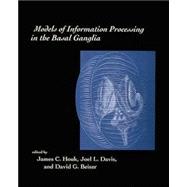
Note: Supplemental materials are not guaranteed with Rental or Used book purchases.
Purchase Benefits
What is included with this book?
| Preface | |
| Information Processing in Modular Circuits Linking Basal Ganglia and Cerebral Cortex | p. 3 |
| Context-dependent Activity in Primate Striatum Reflecting Past and Future Behavioral Events | p. 11 |
| The Contribution of Cortical Neurons to the Firing Pattern of Striatal Spiny Neurons | p. 29 |
| Elements of the Intrinsic Organization and Information Processing in the Neostriatum | p. 51 |
| Adaptive Neural Networks in the Basal Ganglia | p. 103 |
| Macro-organization of the Circuits Connecting the Basal Ganglia with the Cortical Motor Areas | p. 117 |
| Toward a Circuit Model of Working Memory and the Guidance of Voluntary Motor Action | p. 131 |
| Modeling the Roles of Basal Ganglia in Timing and Sequencing Saccadic Eye Movements | p. 149 |
| A State-Space Striatal Model | p. 163 |
| Cellular Models of Reinforcement | p. 187 |
| Adaptive Critics and the Basal Ganglia | p. 215 |
| Reward-related Signals Carried by Dopamine Neurons | p. 233 |
| A Model of How the Basal Ganglia Generate and Use Neural Signals That Predict Reinforcement | p. 249 |
| Contribution of the Basal Ganglia to Skill Learning and Working Memory in Humans | p. 277 |
| Memory Limits in Sensorimotor Tasks | p. 295 |
| Neostriatal Circuitry as a Scalar Memory: Modeling and Ensemble Neuron Recording | p. 315 |
| Sensorimotor Selection and the Basal Ganglia: A Neural Network Model | p. 337 |
| Contributors | p. 375 |
| Index | p. 379 |
| Table of Contents provided by Blackwell. All Rights Reserved. |
The New copy of this book will include any supplemental materials advertised. Please check the title of the book to determine if it should include any access cards, study guides, lab manuals, CDs, etc.
The Used, Rental and eBook copies of this book are not guaranteed to include any supplemental materials. Typically, only the book itself is included. This is true even if the title states it includes any access cards, study guides, lab manuals, CDs, etc.